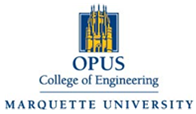Ongoing Research
Computational Combustion Modeling | Combustion-generated Pollutants | Atmospheric Soot | High-performance Computing
Atmospheric soot and air quality

In the context of global climate change, combustion-generated soot or black carbon is a major concern [1,2]. Unfortunately our understanding of evolution of soot in atmosphere is very limited. Freshly-formed soot undergoes a dramatic change in its physical and chemical properties as it mixes with other aerosols and volatile matters in the exhaust of the combustion devices and in atmosphere.
This research theme at CCL aims to understand the physics of evolution of soot in the atmosphere so that we can be better equipped to predict and control its effect. We try to look at atmospheric evolution of soot from the point-of-view of an combustion scientist. Therefore we put emphasis on predicting properties of soot or black carbon based on its source — e.g., whether coming from a Diesel vehicle or a wood-stove — and investigate how different soot mature differently in the atmosphere.
[1] U.S. EPA., EPA/600/R-08/139F. 2009.
[2] Bond, T. C. et al, J. Geophys. Res. Atmos., 118:1-173. 2013
Recent CCL Publications
- Comparing CFD and Regulatory Modeling of Pollutant Dispersion Under Different Thermal Stabilities A Tauer, T Onwuzurike, S Roy - APS Division of Fluid Dynamics Meeting Abstracts, 2020
Researchers
- Alec Tauer
- Tito Onwuzurike
Supporting organizations

|








